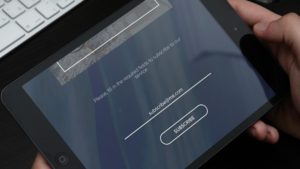By Carolyn Carswell, Conceptual Copywriter, Armadillo
In Armadillo’s Creative and DX team, we’re used to solving complex problems together. Planning complex test-and-learn strategies as a team. And developing ideas and executions side by side. As in any agency, it’s a collaborative effort.
When home working began during the first lockdown back in March, I was worried that the easy, energetic creativity that came with face-to-face concepting would be lost. As the UK hunkers down for its second lockdown, many of these same fears seem to be arising among those who will now have to return to working from home.
But this time it’s different. We’ve done it all before. We’ve adapted, or ‘pivoted’, as they say. We’ve settled into a new way of sharing our ideas that doesn’t hamper flow. It feels dynamic and agile and buoyant.
As we move into Lockdown 2.0, we can apply previous learnings to ensure we’re still able to produce great creative whilst working from home. Here’s how to turn that creative flicker into a full-on collaborative flame.
Keep numbers small
The traditional Art Director/Copywriter combo is still a winner; just because you can now get the whole account team on it doesn’t mean you should. With too many well-intentioned contributors, an ideation session can quickly go off-course. That’s part of the skill of a creative team; to think big, but quickly sniff out the red herrings and move on if an idea doesn’t meet the brief.
Embrace the tech…
Need to paint the picture? Help them see it? Feel it? Take a photo on your phone and WhatsApp it to the team. Add quick links to a project chat room. Set up a shared Pinterest board for inspiration, or create a mood board in Google Docs. Grab and drop. Cut and paste. An online whiteboard tool like Miro can be useful when you need to collaborate.
…or stick with analogue
When it comes to capturing and collating ideas down as they strike, I’ll always favour analogue methods: paper, marker pens, white boards and blu tack. Embracing new tech is admirable and dynamic and forward-thinking etc. But if the thought of grappling with new systems adds to your pandemic-induced anxiety, go easy on yourself. We’re human. Our energy is a finite resource.
The concepting conversation remains the same; “What about if we…” *scribbles frantically*. “How about something like…” *sends screen shot*. Draw it out and hold it up to camera. If it ain’t broke…
Get out more
A dose of nature can literally open your mind. According to Lieberman and Long, authors of ‘The Molecule of More’, ‘Nature is complex. It’s made up of systems with many interacting parts. Unexpected patterns emerge as a result of a large number of elements influencing one another.’ These unpredictable natural scenes can stimulate creativity, focus and cognitive understanding – three things I couldn’t concept without. So take that walk. Have that cup of tea in the garden. Step out of your work zone and away from the routine stimuli of your desk (or dining table) and watch the ideas flow.
Understand the psychology of creativity
Creative thinking involves gut-feels and hunches. Eureka moments and excitable reactions. But on those days when it feels like we’ve been lobbed out of our comfort zones like a half-finished milkshake from the window of a speeding car, coming up with the goods is hard. Neuroscience points the finger at the amygdala – the part of the brain that processes emotion and motivation; in particular, emotions relating to survival. Of course, the amygdala can only process so much, which is why it’s hard to follow a creative train of thought when your brain keeps getting derailed by pandemic anxiety. Perhaps it’s time to be realistic about your own output, or that of your employees’?
Concepting remotely isn’t nearly as much fun as doing it in person. Conversations are less entertaining and trains of thought not nearly as random. So for me, finding a safe, sensible way to reinstate face-to-face concepting is the ideal. But I’m relieved to say that, until then, we’ve found a way to come up with the goods.








